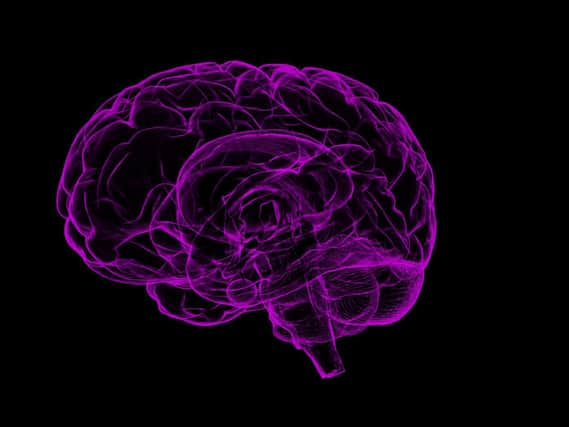Doctor's column: Not just the little grey cells....discovering brain processes


The outer part or the surface of the brain, which is called the cortex, has a greyish-pink appearance due to the type of nerve cells that it contains. These are the bodies of the neurones, writes Dr Keith Souter.
They have no white coating of a substance called myelin, hence their grey-pink appearance.
Advertisement
Hide AdAdvertisement
Hide AdThe deeper tissue of the brain and the outer part of the spinal cord and the nerves that flow to all parts of the body are made up of myelinated nerve fibres. This makes them appear white.
The white matter is essentially the conducting tissue, or the wiring part of the nervous system.
Until very recently, not much was known about how the grey and white matter operated together.
The problem is that much of our information comes from anatomical and histological study of post mortem tissue. There has been a lack of a means to study it in living human brains.
Advertisement
Hide AdAdvertisement
Hide AdNow, scientists at the Max Planck Institute, using very high field strength magnetic resonance imaging, MRI, have been able to make an incredibly fine layer of white matter, called the ‘superficial white matter’ visible.
This is very important, because other research suggests that this fine layer of superficial white matter is implicated in conditions such as Alzheimer’s disease and autism.
They found that this superficial white matter contains a lot of iron. This is necessary for the process of myelination. This process occurs throughout life.
They found that the largest concentration of iron was found in the superficial white matter in regions of the frontal cortex, which is where much of our ‘personality’ arises.
Advertisement
Hide AdAdvertisement
Hide AdIncredibly, the human frontal cortex is not fully myelinated until the fourth decade of life.
This is an exciting discovery that may help us to understand some of the mystery of the interface between white and grey matter.
It may be one of the missing jigsaw pieces in the hugely complicated puzzle of how the brain works and how degenerative conditions like Alzheimer’s disease may progress.